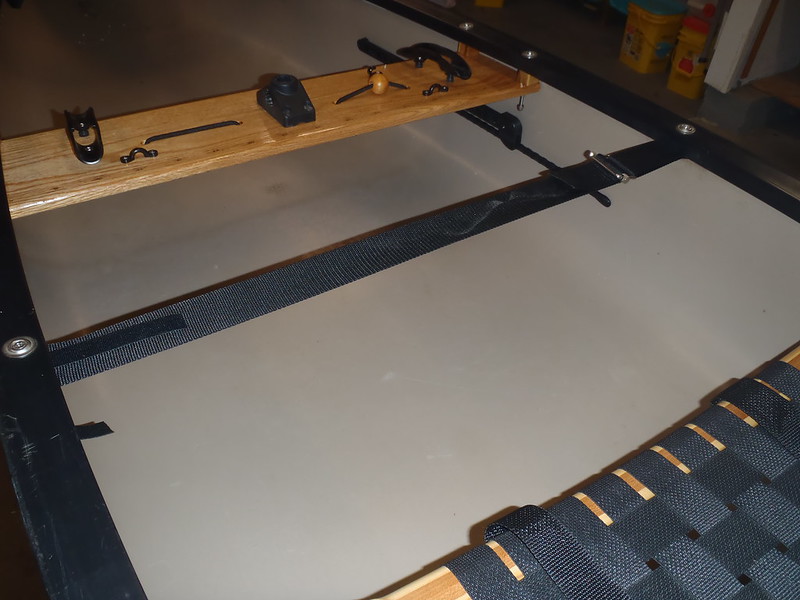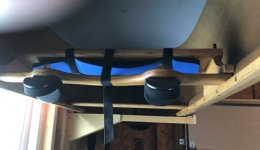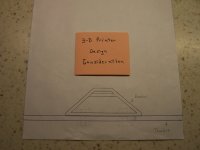“What's your current view as to the best clip or buckle, both for security and ease of use, for a strap yoke?”
I am back to using quality (ITW/Nexus) 2” side release buckles, or 2” double D-rings on heavier (70lb and up) canoes, which can be problematic to get released after tension.
The adjustable webbing slider, with the knurled bar, looked promising, but was largely a fail:
https://www.amazon.com/VGEBY1-Stain...justable+webbing+slider&qid=1606313860&sr=8-6
From this strap yoke discussion
https://www.canoetripping.net/threads/strap-yoke-variation.74927/
Those adjustable sliders work well with the canoe on my shoulders and the webbing under tension, but when roof racked, with the webbing connected across the hull through the knurled slider, invariably come loose, usually within a few miles. No matter how tightly the webbing was pulled, and I tried a variety of webbing, the knurled bar jiggles loose and a sudden whapwhapwhap sound of a loose strap hitting the cap roof makes me pull over. And “fix” then, with the canoe already on the roof racks become problematic.
Neither of the adjustable slider solutions I tried was agreeable. I could set the canoe / on the rear rack, undo the webbing strap I had use to carry it there, roll it up and hope the Velcro held it in place, or slide a ladder lock on the long length, run webbing through the slider and then (gotta leave enough slack) run the webbing through the ladder lock. That double-connection was a fussy process, and left a hard ladder lock near my neck area.
If someone can suggest a better way to secure the bitter end of the webbing, so the jiggle loose of the slider bar doesn’t matter in transport I’d like to use the ones I bought, installed and removed. So far they are a fail.
No doubt a strap yoke, positioned and tensioned horizontal at highway speeds, can produce harmonic vibration, but in (many) thousands of miles with a connected webbing yoke in place I have not had a side release buckle fail, even the cheap Chinese one that suddenly break while the canoe is over your head.
I did have one end of a side release buckle strap come loose on a long trip; the buckles held together, but there was enough harmonic vibration to unscrew the stainless hardware on one side. The much louder whapwhapwhap from the side release buckle flailing against the cap roof was
“Oh-crap what’s that?” startling. That was yet another time I was glad to have extra machine screws hardware in the Spares & Repairs bag; there was a bit of a carry from racks to water, and I really needed a yoke.
The better than double D-ring solution for heavier canoes would be a 2” cam lock buckle, and I may have to search for one that size in stainless just to try. Or even 1 ½”; I don’t think I’d want a 1” wide strap yoke for neck/shoulder comfort reasons.
On a two-seater tandem canoe I’ll take a real, permanently installed yoke every time. A nice, deeply sculpted yoke, with a little vertebrae notch and wide, double hung ends.
Or, with three seats or a kneeling thwart or other outfitting in the way, some clamp on version. I get the clamp-on functionality on a portage trip, but have a
how-do-you roof rack transport question using those.
Clamping the yoke in place, shouldering the canoe and putting it on the roof racks, does the clamped yoke remain in attached (yikes - lost on the highway), or is it removed once the canoe is on the roof (how?) and then reinstalled (also how) when it is time to take the canoe off the roof?
That question runs to my lack of desire (or ability) to lift a canoe high above my head and put it on tall truck or van racks working from the side. Instead I set the bow on the rear crossbar /with the stern deck tip on the ground, step out from the yoke, walk to the back and slide the boat onto the racks.
Of course any yoke system with pads or towers above the sheerline also precludes that oh-my-aching-back slide on solution.
 PC230016 by Mike McCrea, on Flickr
PC230016 by Mike McCrea, on Flickr PB260012 by Mike McCrea, on Flickr
PB260012 by Mike McCrea, on Flickr PB260014 by Mike McCrea, on Flickr
PB260014 by Mike McCrea, on Flickr PB260015 by Mike McCrea, on Flickr
PB260015 by Mike McCrea, on Flickr PC230016 by Mike McCrea, on Flickr
PC230016 by Mike McCrea, on Flickr PB260012 by Mike McCrea, on Flickr
PB260012 by Mike McCrea, on Flickr PB260014 by Mike McCrea, on Flickr
PB260014 by Mike McCrea, on Flickr PB260015 by Mike McCrea, on Flickr
PB260015 by Mike McCrea, on Flickr

